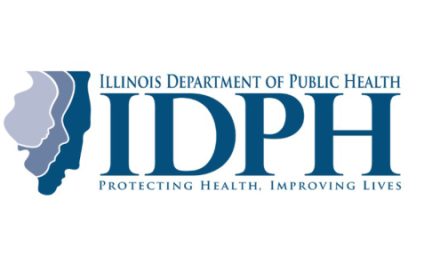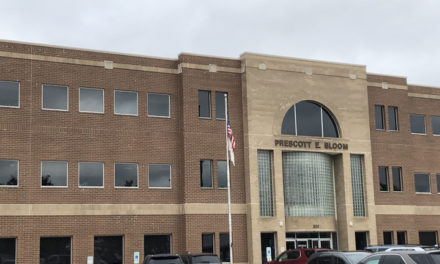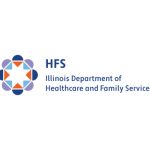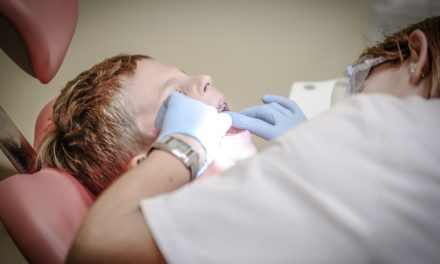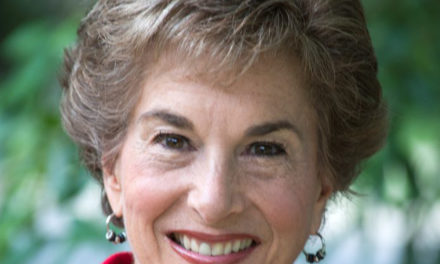
On the record with Raul Garza, president and CEO, Aunt Martha’s Health & Wellness

Raul Garza said he is proud that Aunt Martha’s Health & Wellness has been a pioneer of integrated care in Illinois.
The Olympia Fields-based agency began providing community-based services in the 1970s. It now has dozens of centers across northern and central Illinois that provide an array of healthcare and other services to over 70,000 clients annually.
Garza, its president and CEO, recently spoke with Health News Illinois regarding value-based care, the state’s plans for integrated health homes and why they reconsidered their decision to reject $500,000 from the Title X federal family planning program.
Edited excerpts are below:
HNI: Aunt Martha’s is known for its work on integrated care. How did that come about?
RG: Between 1993, when I started, and 2002, I had a desire to go into the operation side of our work and really refine or design a healthcare system that I thought would be needed for the people we were serving. So I looked at what were the best healthcare systems in the country, focusing really on three that exhibited my thinking. I looked at Kaiser Permanente. I looked at the Mayo Clinic and the Cleveland Clinic model. And what was interesting to me was the heavy emphasis on integration of care…(when) I transitioned from (chief financial officer) to chief operating officer and it’s there that I really started to emphasize integrated care.
So one of the things I did was I went out and sought a pilot learning opportunity and fortunately came across Columbia University in New York. They were piloting what they called a collaborative pilot program to screen children and adolescents for depression in the primary care setting. So just imagine if your child were to come into Aunt Martha’s to be cared for a flu, cold or an immunization, they would get the benefit of a screening for depression knowing that in children it’s very pervasive, especially in the uninsured and underinsured and even the Medicaid population.
So as we began to diagnose, we had to build the capacity to treat those patients. So we built to capacity and to this point we’re at seven psychiatrists on our staff. We’re a pioneer in telepsychiatry. So even though we go as far south as Danville in a physical state, several hundred thousands of people that are in central and southern Illinois, we provide telepsychiatry services to the community mental health organizations in those regions who would not have access to a psychiatrist because they do not live in certain parts of Illinois.
So 13 years ago, we did that, and years later, we began using it as a strategy to create more access throughout the Chicago metro area and then we started really focusing on designing a value-based care model. So how we live our lives at Aunt Martha’s, when we talk about value-based care, it’s not just necessarily healthcare, it can be any of the work we do. It can be child welfare, it can be community-based work, it can be job assistance. What we do is define value by being able to demonstrate that the people in our care are getting healthier, but also that we are able to demonstrate we can lower the cost of care.
HNI: How does Aunt Martha’s connect services?
RG: Right now, the six insurance companies in Illinois who are responsible for the Medicaid population are also responsible for providing care coordination. They have the responsibility and the decision on whether they want to provide care coordination or they want to allow the provider or a third party to provide care coordination.
So six or seven years ago, we sought to gain experience in being able to do the care coordination ourselves because what we saw in the literature is that when the care coordination can be done by the provider, it really does produce lower administration cost, lower confusion and lower fragmentation. So we were able to go into an arrangement with one of the insurance companies, CountyCare, where they were willing to allow us to perform the care coordination for our own patients…Five years ago we started doing our own care coordination on our patients, and we started looking at the data and we saw that we were a leader within that market, according to the patient outcomes that we saw.
…So we talked with the other insurance companies about allowing us to do the care coordination, and I think they’re moving closer to wanting to do that. But primarily, the MCOs are going to hold on to that function because, I think, it’s something they’ve been able to do. And not every provider is able to do the care coordination because they do not really have the experience.
HNI: We’re seeing a growing shift in the healthcare industry toward integrated care and value-based care models. From your experience, why do you see these models as the way to go?
RG: The macro answer is the U.S. economy cannot afford large increases in healthcare costs. Right now we’re hovering around 19 percent, and I’ve seen research that shows that if the costs continue to grow and it tips into the 20 percent range, it will start to cannibalize other sectors of the economy like infrastructure and education. So it has to be under control, especially when you look at our mortality rate as compared to other civilized, industrial economies in the world. They have more effective outcomes for their patients and they’re living longer. Then you drill down to see what they’re doing, there’s a strong emphasis on integrated care.
So why is integrated care the model we’re moving to? As I’ve said, you have the providers in the same room, in the same conversation, talking about what’s going on with a patient. If a patient is suffering from diabetes and it’s not being treated, think about what it does to one’s mental health disposition. Or asthma if it’s not getting treated. There’s only so much that the psychiatrist or therapist can do if the patient is not being treated for their physiological symptoms that they’re suffering from, and vice versa. If they are suffering from one of those illness and they are being treated, but they might need some sort of behavioral health support and they’re not getting it, it can lead to other counterproductive behavior that will hurt their physical health. So having that integrated approach ensures that providers are working on the same script and understand what their colleagues are doing to treat their patients. Because it really is a holistic approach to how patients are cared for, and it’s proven to be cheaper and it’s proven to be more effective.
HNI: What are some of the changes you’re seeing regarding the services that are needed in the state?
RG: We have an opioid crisis right now, and I think one of the things we’ve done in the last year is to really start screening for substance use disorder in the primary care setting. So what we’ve seen happen traditionally is that patients are going to a substance abuse office or location. And I think similar to mental health, and really all health, is you’ve got to begin the treatment in the primary care setting because it is a medical diagnosis, just like mental health and all health diseases, and you have to treat it in a holistic way… And I think you’re seeing a greater movement toward that. So it still is a specialized approach to care, but it’s also an integrated approach to care that has the primary care doctor at the center of treatment.
HNI: What are the challenges you face with this model?
RG: We’re told there’s going to be an initiative launched in January, which is called the integrated health home, and that is a big deal. Last year when the program was supposed to launch, Aunt Martha’s was one of, I think, two dozen organizations that were certified to be an integrated health home. So we went through the certification process, we were certified, and what I see right now as a challenge is there is a lot of trepidation to really embrace that model. I know people have operated in that kind of model in the past, but I think there is going to have to be a movement toward all of us figuring out how we can talk to each another when we might all be touching the patient for different reasons. It could be that Aunt Martha’s is touching the patient for primary care, while someone else might be doing the therapy. Those situations happen all the time where you have all these different providers touching the patient at some level of their care.
The challenge is how we get on the same page and communicate with each other so we know what each other is doing. That’s going to take technology and real collaboration in a way where we all have the information on the person that we’re serving. So that will be a major challenge as the state moves into this model, and for us as a provider to learn how to work in that way. Just because it’s not under one roof does not mean care that communication and coordination cannot happen. We have to figure out how to do that in our own unique ways, in our own unique organizations in an external way so that it looks like we’re working under one roof, when in reality we’re all different organizations with different missions and different specialties.
HNI: What more can policymakers do to help support the integrated health home model?
RG: I think we’ve been operating on a psychology that has us being reimbursed at a certain rate that’s antiquated and not really based on outcomes but based on process. I do not think that’s the right way. I think what we need to do is say, ‘Look, we don’t want to pay for process anymore. We want to pay for outcomes, outcomes that show the patients get healthier.’ So if a patient is diagnosed with diabetes that are out of control, what does it cost to get that diabetes under control for the patient to be compliant, what does that intervention look like? And I think every organization needs to know what that cost is to get to the outcome, which is to get the diabetes under control and to have that patient adhere to their treatment plan. That’s where the focus needs to be. Right now, we’re too focused on process that doesn’t deliver outcomes that are measurable or show that we are effective, let alone that the cost of care is being reduced.
HNI: Aunt Martha’s announced they would not accept the $500,000 they were set to receive from the Title X federal family planning program. What led to that decision?
RG: Well, when we put that out there, it was as a result of an interpretation of the policy change. Our federal project officer, she contacted us and said, ‘I saw you’re going to reject the funds, what’s that about?’ And we said we have always let the patients know all their options, and those options go from giving birth to the fetus to terminating the pregnancy if they felt it was the right thing. The project officer said, ‘Wait a second, let’s talk this through because I think I can offer some clarity.’ And we are allowed to have that conversation with the patient about what their options are, what you are not able to do is make a direct referral into a clinic that performs abortions. So that was news to us because our interpretation was not that way. So after that conversation, we followed up in writing for confirmation of our understanding, and we got confirmation back from the federal government that it was, in fact, an accurate understanding.
So we discussed it internally and in fact, we are going to accept the funding and start the services back up feeling comfortable that we can sit with our patients and every one of our clinics that is Title X funded and offer them all options as they did before. The only difference is that we cannot physically make the referral to a clinic that does provide abortions, and we can live with that.
Health News Illinois is a nonpartisan, independent news service covering the Illinois healthcare beat. Sign up for a free trial to the newsletter here.

